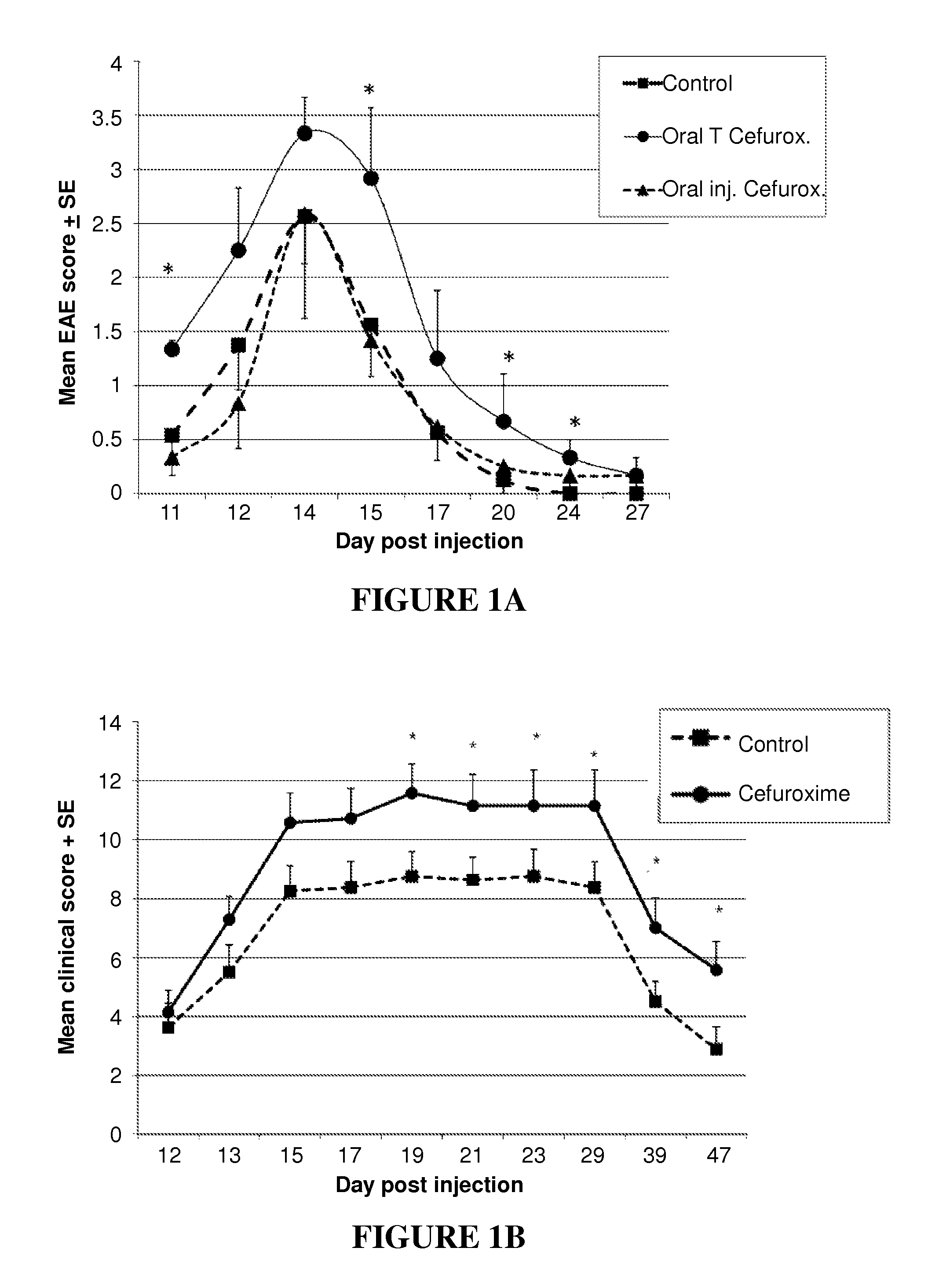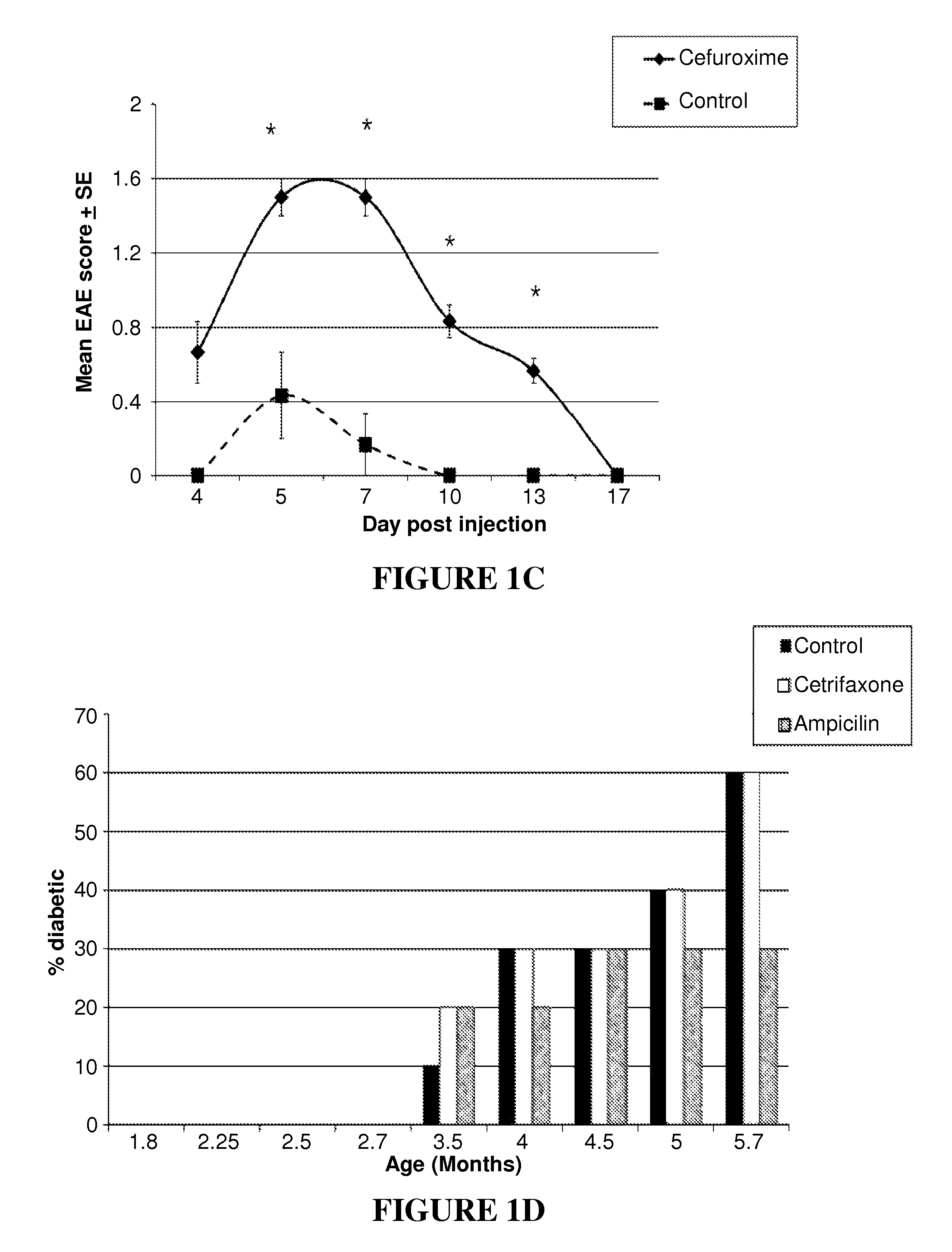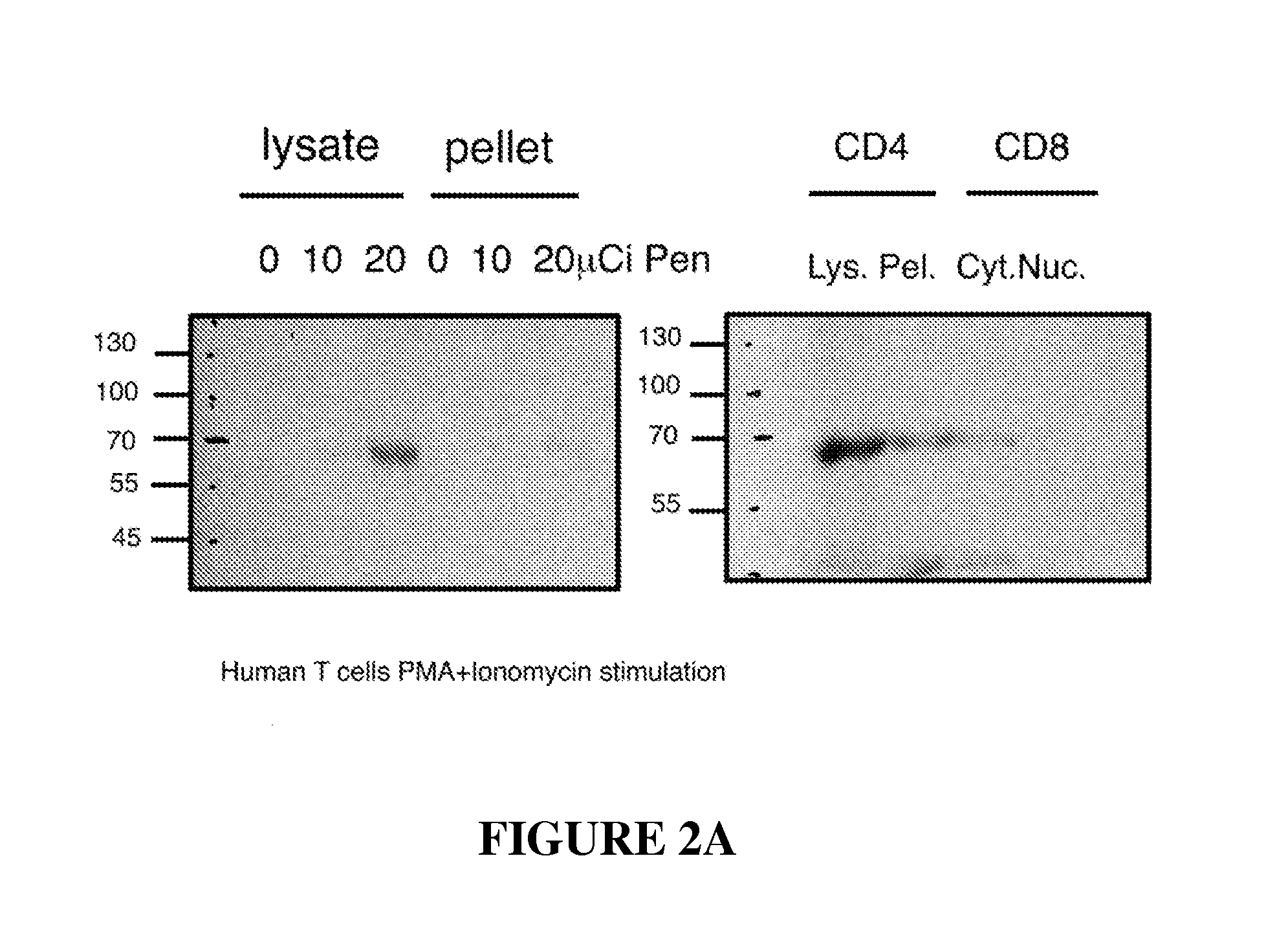Beta-lactam compounds for enhancing T cell-mediated immune responses
a technology of t cell and beta-lactam, which is applied in the field of beta-lactam antibiotics that can enhance t cell mediated immune responses, can solve the problems of weakened cell wall and osmotic lysis of bacterial cells, and the beta-lactam antibiotics would not be able to directly affect mammalian cells, so as to prolong the therapeutic effect and prolong the half-life
- Summary
- Abstract
- Description
- Claims
- Application Information
AI Technical Summary
Benefits of technology
Problems solved by technology
Method used
Image
Examples
example 1
Enhancement of Actively Induced EAE and Adjuvant Arthritis by Cefuroxime Treatment
[0185]To test the effects of antibiotics in vivo, active experimental autoimmune encephalomyelitis (EAE) was induced in rats as described above, and the injected rats (4 per group) were treated with oral cefuroxime axetil in the drinking water from day 7 postinduction (“Oral T Cefurox.”). One 500 mg tablet was dissolved in 500 ml of drinking water. The daily dose was 50 mg / kg, in the range of therapeutic pediatric human doses. As a control, the intravenous cefuroxime sodium preparation, which is not absorbed into the circulation, was administered orally (“Oral inj. Cefurox.”). A second control group was given water without antibiotics (“Control”). As can be seen in FIG. 1A, the rats that received oral cefuroxime developed significantly more severe EAE than the two control groups. To extend the results to another experimental autoimmune disease, Adjuvant Arthritis (AA), two groups of 8 rats each were in...
example 2
Cefuroxime Treatment of Encephalitogenic T Cells Enhances Adoptive EAE
[0186]Treatment with cefuroxime in vivo could affect many different host agents involved in EAE or AA as well as influencing the rats' bacterial flora. To test whether the antibiotic might directly modify the behavior of effector T cells, an encephalitogenic T-cell line was stimulated in the presence or absence of cefuroxime in vitro. The weakly encephalitogenic BP10 line was used, and was stimulated for 3 days with MBP in the presence or absence of cefuroxime (50 μg / ml). The activated T cells were then washed to remove the antibiotic, the T cells were injected intra-peritoneally into naïve recipient rats (107 per rat), and EAE was scored. The BP10 line at later stimulations was used, when its pathogenic potential is reduced, allowing to detect both suppression and enhancement of disease. As can be seen in FIG. 1C, the presence of cefuroxime during T-cell activation markedly enhanced the manifestations of EAE in t...
example 3
Different Beta-Lactam Antibiotics Enhance EAE
[0187]Several beta-lactam antibiotics were tested for their effect on the adoptive transfer of EAE. The BP10 line was incubated with cefuroxime, ceftriaxone or ampicillin (at 50 μg / ml). Ceftriaxone enhanced EAE severity, as did cefuroxime, but ampicillin treatment did not increase the severity of EAE.
PUM
| Property | Measurement | Unit |
|---|---|---|
| concentration | aaaaa | aaaaa |
| concentration | aaaaa | aaaaa |
| concentration | aaaaa | aaaaa |
Abstract
Description
Claims
Application Information
 Login to View More
Login to View More - R&D
- Intellectual Property
- Life Sciences
- Materials
- Tech Scout
- Unparalleled Data Quality
- Higher Quality Content
- 60% Fewer Hallucinations
Browse by: Latest US Patents, China's latest patents, Technical Efficacy Thesaurus, Application Domain, Technology Topic, Popular Technical Reports.
© 2025 PatSnap. All rights reserved.Legal|Privacy policy|Modern Slavery Act Transparency Statement|Sitemap|About US| Contact US: help@patsnap.com



